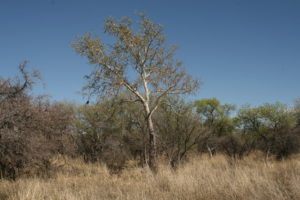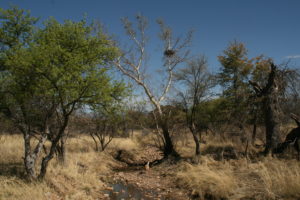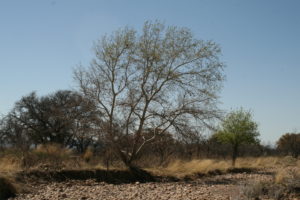
Sycamores are the genus Platanus, which was the old Greek name for the tree that is the species Platanus orientalis. There are five or six species found around the world, three spp. found in North America and just across the pesky border in northeastern Mexico is the beautiful Platanus mexicana… but anyway, one species here in Arizona and that is Platanus wrightii. Other common names for the tree are plane tree, buttonwood and buttonball. Oh, and the common name sycamore is also derived from an ancient Greek word for a species of fig tree. Which means that when the tax collector Zacchaeus climbed a sycamore to see Jesus as he entered Jericho, he climbed a fig tree. Who knew?
Sycamore trees have swooping branches that seem to invite climbing. Many years ago in Aravaipa Canyon I climbed up onto a long branch that bent to the ground. As I climbed – okay crawled – upward, I turned around to see our dog Hoppy following me up into the tree. So, everyone thinks they are good climbing trees.
A couple notes: the photos are mine and taken recently of some trees along the Ol’ Guajolote that were just leafing out. They are really quite young, but will grow to be huge I hope. I’ve seen some sycamores with a 3-4 foot diameter and I remember reading that sycamores are the largest deciduous trees in North America. Cool! And now you know.



This is an episode about hearing my heart beat. I initially was going to talk about the noise made by ORVs, ATVs, SUVs and...

Okay, I’m being a little snooty by making fun of the cook who thinks there are male and female eggplants and actually I had...

Surely I’m not the only person who sits around reading field guides by a warm wood stove. And our field guides do end up...